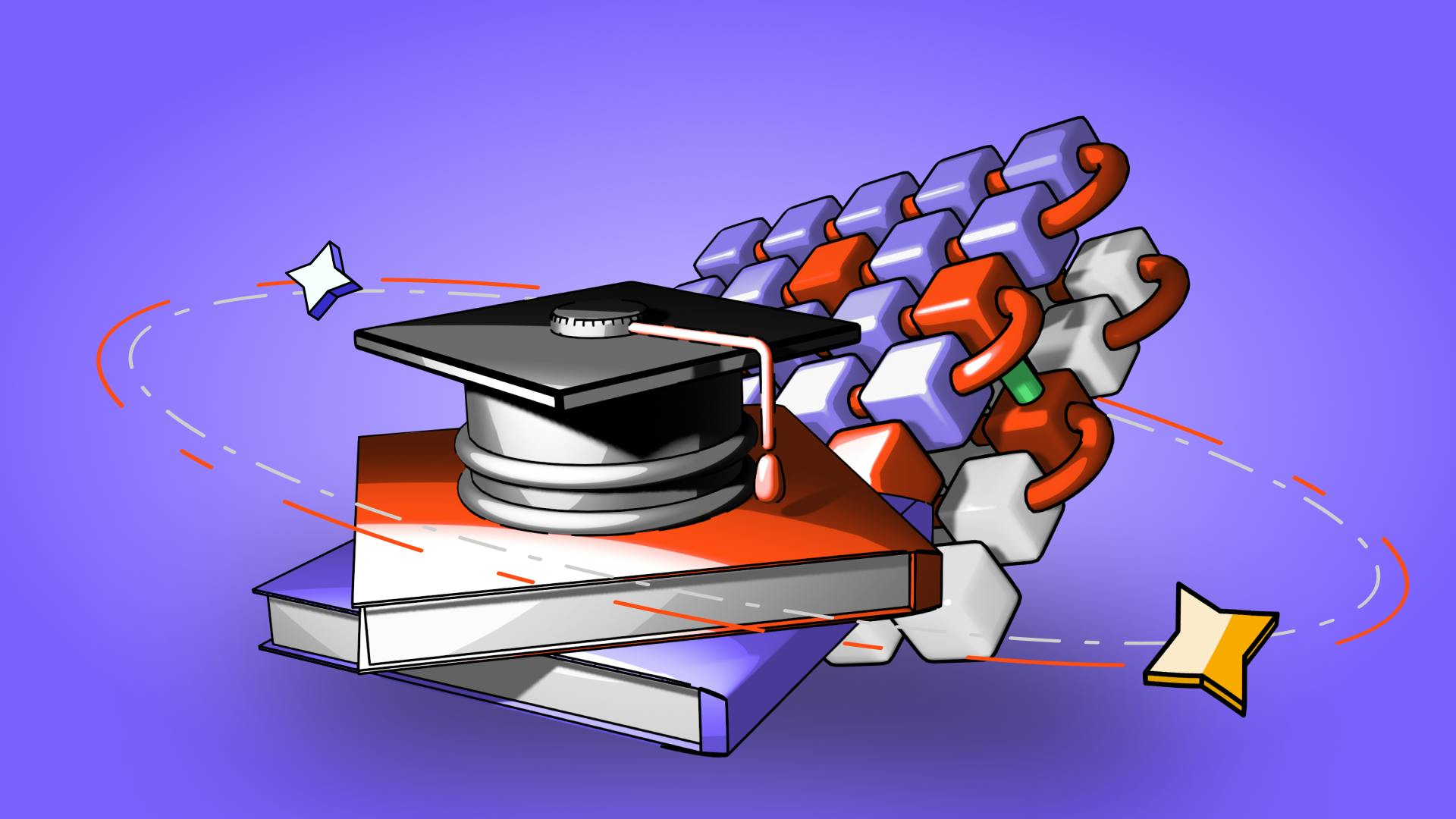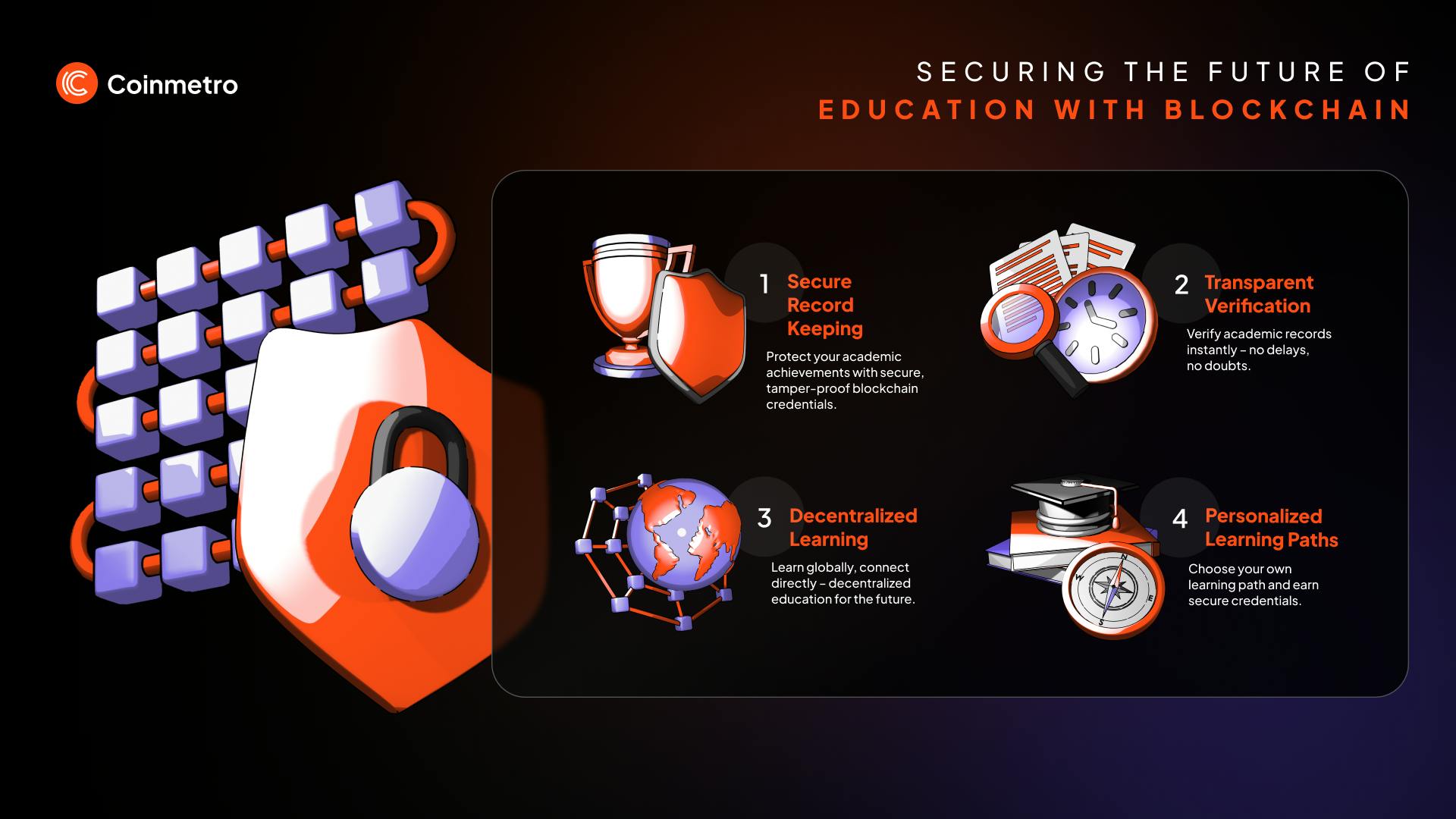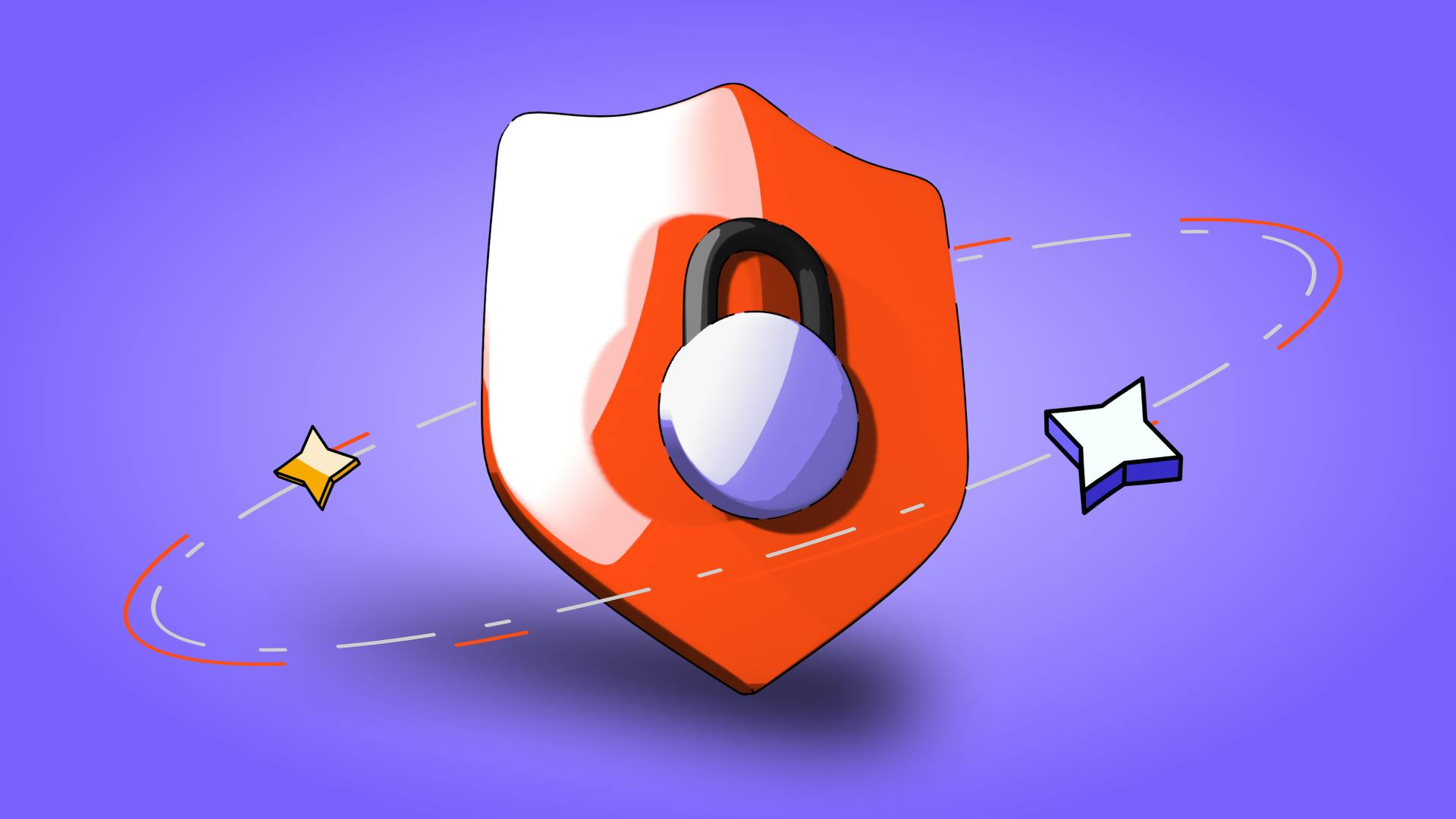Blockchain in Education: Transforming Learning and Credentialing
December 5, 2025

by Coinmetro Editorial Team
December 5, 2025
What if your academic record could be verified instantly, anywhere in the world? This is just one of the questions reflecting how blockchain is reshaping access and trust in education. Blockchain, first used in cryptocurrency, now supports core systems in finance, healthcare, and logistics. Its decentralized structure protects data, storing records across many nodes. This design removes single points of failure and prevents tampering.
In education, it offers the same edge. Credentials — like diplomas and transcripts — can be issued on-chain, verified without third parties, and accessed globally in seconds. No delays. No risk of forgery. For institutions, this means lower costs and reduced fraud. For students, it means portable, secure proof of learning, owned and controlled by the individual.
By replacing paperwork with immutable records, blockchain delivers a future where qualifications are always verifiable, transparent, and protected by design.
This blog will explore how blockchain can transform education by enhancing learning processes and credentialing systems.
You will learn about:
- Current challenges in education and credentialing
- How blockchain can transform education
- Decentralized learning platforms
- Case studies of blockchain in education
- Future outlook
By addressing the following challenges, blockchain technology can offer secure, efficient, and transparent solutions for the education sector:
Fake degrees and forged certificates continue to damage trust in education. Many private institutions focus on profit, not quality, creating space for fraud. Unqualified people often land key roles, putting public safety at risk in fields like health and engineering.
Checking traditional credentials takes too long and costs too much. Schools and employers rely on slow responses from issuing bodies. Old systems and poor data access cause long delays and waste money.
Academic records are often stored on paper, which is easy to lose or damage. Even digital systems face hacking and data leaks, risking both privacy and trust.
Discover The Anatomy of a Smart Contract: Breaking Down the Code
Secure record keeping: Blockchain protects academic records by using encrypted data blocks that connect in sequence. Each new entry links to the one before it. This structure prevents tampering and makes unauthorized changes easy to detect. It also reduces the risk of data loss or fraud.
Efficient verification: With blockchain, verifying academic credentials takes seconds. Schools don’t need to respond manually. Employers access trusted records on-chain, cutting admin costs and delays while improving accuracy and speed.
Decentralized learning platforms: Blockchain allows direct learning without central gatekeepers. Students and teachers connect, share content, and issue verified credentials. Smart contracts log each result, making learning more open and traceable.
Learn About 5 Ways Blockchain Is Revolutionizing Higher Education

Blockchain is transforming education with secure, direct, and cost-efficient learning. These platforms cut out intermediaries and automate tasks, improving speed and transparency.
Direct Peer-to-Peer Learning: Educators and students connect directly. This removes gatekeepers and opens up knowledge sharing. Platforms like Teachable let experts create and sell their own courses.
Global Accessibility: Decentralized platforms remove location barriers. Anyone can access quality education from top institutions or skilled individuals. This widens access and encourages global collaboration.
Enhanced Security and Privacy: Blockchain locks data in place, protecting student records and credentials. Decentralized storage tools like Sia keep learning materials safe, traceable, and tamper-proof.
Cost Reduction and Efficiency: Smart contracts handle tasks like enrollment and grading. This reduces overhead and speeds up workflows. It lowers tuition and cuts administrative costs.
Personalized Learning Paths: Students select courses that fit their goals. Learning is flexible, focused, and aligned with real-world outcomes. This leads to better engagement and stronger results.
Learn About Blockchain and Intellectual Property: Effectively Protecting Creations
Blockchain is helping schools secure academic credentials and improve how they’re verified. These case studies show how institutions are using it to increase trust and reduce manual processes. Students benefit from stronger records, while employers gain faster, tamper-proof verification.
MIT has led the way in blockchain credentialing. With Learning Machine, it built the Digital Diploma project. This lets graduates receive diplomas on their phones in a secure, tamper-proof format. The blockchain system ensures credentials are verifiable and resistant to fraud.
The University of Melbourne started issuing blockchain-based credentials in 2017. Students can share verified records with employers and schools instantly. These digital diplomas are secure, making it easy to confirm a student’s academic history.
SNHU uses blockchain to issue digital badges and certificates. These credentials are stored on a secure chain, making them tamper-proof. The system shortens the process of proving academic achievements.
The University of Nicosia in Cyprus was one of the first to use blockchain for academic certificates. It records them on the Bitcoin blockchain for transparency and fraud protection. These credentials are easy to verify and difficult to alter.
CNM issues diplomas and transcripts using blockchain. This protects records from tampering and supports instant verification. The system improves trust while reducing credential fraud.
Discover the Benefits of Blockchain Technology in Higher Education
In 25 years, blockchain technology could potentially revolutionize education, making it more secure, transparent, and efficient:
Instant Verification: Academic records will be instantly verifiable, eliminating lengthy background checks and ensuring the authenticity of qualifications.
Global Accessibility: Education will become accessible anywhere, breaking down geographical and socio-economic barriers. Blockchain-powered platforms will support global collaboration, allowing students from different countries to collaborate seamlessly, fostering a diverse and enriched learning environment.
Personalized Learning: Education will be highly personalized, with students designing their own learning paths. Smart contracts automatically enroll them in courses, track their progress, and issue certifications upon completion. This ensures each learner receives the education they need to succeed.
Decentralized Ecosystems: Decentralized education ecosystems will emerge, reducing the centrality of traditional institutions. Learners will access courses from universities, industry experts, and peer educators, with blockchain ensuring all contributions are recognized and rewarded.
Efficient Administration: Administrative tasks like enrollment, fee payments, and record-keeping will be automated and secure, reducing fraud and errors. This efficiency will allow institutions to focus more on teaching.
Micro-Credentials: Digital badges and micro-credentials will become prominent, showcasing specific skills and achievements, stored securely on the blockchain for easy verification.
Cost Reduction: Overall, the cost of education could decrease as blockchain reduces administrative overhead. More people will have access to affordable education, leading to a more educated and skilled global workforce, driving economic growth and innovation.
In essence, by embracing blockchain, education will become more secure, accessible, personalized, and efficient, preparing a new breed of learners of the future.
Blockchain improves education by keeping records secure, making checks faster, and expanding access. It fixes common problems like fake documents, slow validation, and poor record systems.
Academic records become tamper-proof and easy to verify. Blockchain platforms let students and teachers connect without middlemen. These tools reduce costs and support flexible learning based on student goals.
MIT, Melbourne, SNHU, Nicosia, and CNM already use blockchain for credentials. Their results show how this tech can successfully improve global education.
▶️ Watch: TEDx Talk - Blockchain Will Revolutionize Higher Education
Join the Coinmetro community on Discord and Telegram, where forward-thinking traders and investors gather to share insights, explore new opportunities, and dive deep into cryptocurrencies. Should you need any help, please contact our world-class Customer Support Team via 24/7 live chat or email at hello@coinmetro.com.
To become a Coinmetro user today, Sign Up now or head to our new Exchange if you are already registered to experience our premium trading platform.
Tags
Related Articles

Regulatory Sandboxes: Fostering Crypto Innovation Within Legal Frameworks
The cryptocurrency industry’s fast rise fuels an important debate. Innovation aims to transform finance, enhancing speed and access. Yet, regulators…
5m

Crypto Options Trading: Strategies and Market Insights
Cryptocurrency markets have rapidly expanded beyond simple buying and selling. One of the most significant developments has been the rise of…
6m

The Rise of Social-Fi: Blending Social Media with Decentralized Finance
In recent years, social media and finance have started to merge, creating Social-Fi. This concept blends the engagement of social platforms with…
6m

DeFi Insurance Platforms to Watch in 2024
Decentralized Finance (DeFi) insurance addresses the growing need for insurance against hacks, smart contract failures, and other DeFi-related risks.…
7m